Top 15 Best Financial Literacy Books for Kids in 2022
What are the best financial literacy books for kids? That is a question that many parents have been asking themselves this year. Rapid changes in the world in 2022 have caused parents to think about their child’s welfare in the future. We are here to share the knowledge and experience to help them tread their way in this world.
Hence, teaching kids the basics of financial literacy and money management is becoming increasingly important. The best financial literacy books for kids teach them about money and how they can healthily manage their finances. These books also help them learn the importance of saving and how they can use their money wisely.
Finding the right books to teach your children about money and how it works can be challenging. However, there are numerous titles for kids on the market. These 15 financial literacy books can help kids develop the skills and knowledge about money management they need in their teenage years and beyond.
Reading Books to Help Teach Kids About Money
Helping your child learn about money is one of the most important things you can do. It is a fascinating subject, and it can be challenging to teach kids about it. But, the final result is that it can help them grow into a responsible and financially savvy adult. That is the purpose of parenting: transferring the knowledge and experiences to help your child prepare for whatever life throws at them.
There are games, sets, and educational apps that can help them learn the concept of money through chores. In addition, apps such as BusyKid teach children about money management through daily activity. BusyKid is one of the modernized app versions that allows parents to approve and monitor a child’s allowance.
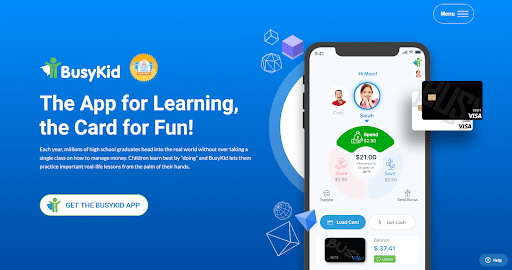
In addition, it has its kid’s debit card, BusyKid Visa® Prepaid Spend Debit Card. Each child in the household can have a debit card and learn how to spend and save money they cannot physically see. The concept behind the debit card for kids is to give your child independence and freedom to use their money and yet understand the idea of the system behind it.
They can use the BusyKid card in stores, online, or on thousands of network ATMs. Money does not grow in trees, and by giving them a task to complete, they will understand the concept and value of a well-earned allowance.
However, it is a well-known fact that children learn through stories. If you could remember one account that you listened to as a child, the chances are it guided your thinking in a particular direction. Narrative with examples is what children understand the best. Hence, the financial literacy books teach kids about financial literacy via characters and actions.
Benefits of Reading Books to a Child
It may be an ideal image in your head to sit down with your child and read financial literacy books for kids till the very end. However, many parents may face some challenges in reality, but that does not mean you should give up. At some point, one story or another will draw their attention. Reading to your child will have many benefits for them in the present and the future.
Thinking
It is a well-known fact that books encourage cognitive development. Reading books, your child can develop critical thinking, remembering, problem-solving, and decision-making. Your child will learn to like reading which is one of the crucial things in academic life. If you ever met a person who likes to spend time in the library, their parents probably read to them as a child. What does that have to do with financial literacy for kids? In simplest terms, the little one will think before making the right decision. Reading books such as these helps a child with the decision-making process.
Bonding
Let us not forget that while you read together, you build a strong bond with your child. In addition, by setting a positive example, it is easier for a child to follow up in the future. You may often hear people describe books as a fantasy land in which you travel once you read them. Well, once you read to your child, you share a uniquely personal reading experience.
Creativity
Psychologists have already proven that books influence a child’s creativity. More often than not, the ones that read as children grow into adults with a creative way of thinking which is more than welcome in the modern world and the majority of careers. In addition, creativity greatly influences emotional health, intelligence, and academic performance.
Attention
As previously said, most children may become restless while reading books. But that’s okay because, as their attention span grows, they’ll listen to the story to the end. Reading books is an excellent technique to improve memory and listening skills.
Vocabulary
If you ever had a child repeat words from the cartoons, the chances are by reading books, and they might extend vocabulary. But, if we are honest, we don’t use many of the words during a daily conversation. That means that books can give your child a new world of expressing thoughts or emotions.
15 Great Financial Literacy Books for Kids
Many books have been published in the last decade to help children learn about finance basics. The best financial literacy books for kids should be age-appropriate, easy to read and teach life lessons that kids can apply to their lives. The topics covered in these books vary depending on the reader’s age group. Here are some of the top financial literacy books for kids that will teach them about money.
Best Financial Literacy Books for Kids Age 4 to 8
#1. One Cent, Two Cents, Old Cent, New Cent – Bonnie Worth
It is best to start teaching children about money early. What better way than introducing financial literacy books for kids with the famous Cat in the Hat? Dr. Seuss’s legacy lives on through television series and educational books such as this one. The book is part of Cat in the Hat’s Learning Library.
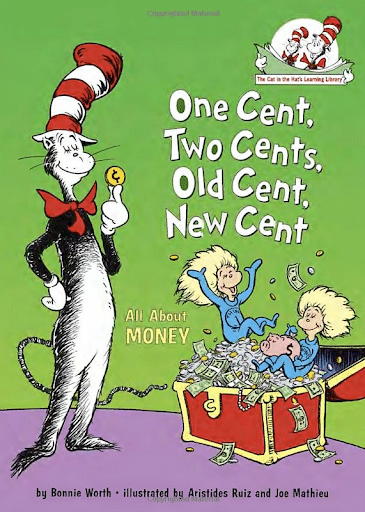
Cat in the Hat guides a child through the history of money and its concepts. The Cat explains different trade and money management forms through various cultures, from shells, feathers, leather, and metal, to coins. But that’s not all, and Cat always has something to say. There is also an explanation of banks, paying and gaining interest, to modern-day coin minting.
This book introduces your child to how money works, what it is, and why we have used it since ancient times. It is a joyride that will take your child on an educational journey through finance but in a fun and exciting way.
#2. Berenstain Bears’ Dollars and Sense – Stan Berenstain, Jan Berenstain
Berenstain Bears is a popular children’s book series, but there is a screen version of the famous bear family. It was developed as an educational cartoon for preschool children. This book is part of the educational series alongside Trouble With Money.
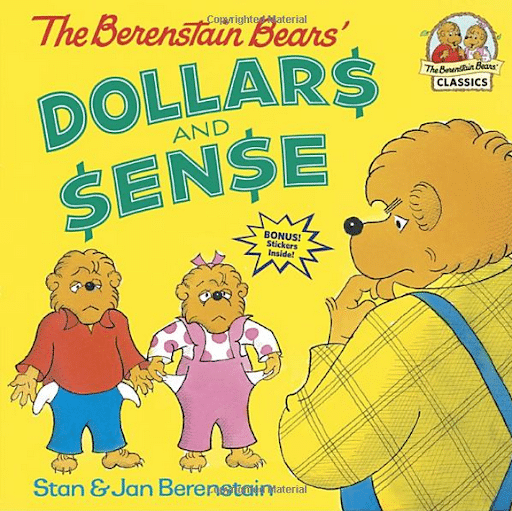
There is always something troublesome going on in Bear Country. So Papa Bear takes matters into his own hands and teaches his children, brother, and sister about money and how to budget for the things they want.
The little ones know that they can use the money to buy things, but the trouble is they do not know how to manage it. Papa then gives them a checkbook to help them learn how to balance their allowance. Next, he shows them how to use checks to buy things for the household. Finally, the story teaches the brother and sister a lesson about spending and budgeting.
#3. Isabel’s Car Wash – Sheila Bair
Sheila Bair had a long career in finance and has written a series of financial literacy books for kids called Money Tales. One of them is Isabel’s Car Wash. It’s a story of a little girl who has only fifty cents in her pocket but wants a Nelly Longhair doll. Unfortunately, the doll is on sale at Murphy’s Toys and costs more than Isabel has. So she decides to open a car wash to make enough money for the doll.

But, as with everything in life, things get complicated when Isabel finds out she needs five dollars to buy supplies from the hardware store. Now that’s trouble! But, she comes up with an idea to persuade her four friends to invest in the business with one dollar each. So, the story continues but will Isabel be able to raise enough money from her car wash to buy that doll looking at her from the store window?
#4. Miss Fox’s Class Earns a Field Trip – Eileen Spinelli
Eileen Spinelli has been writing children’s books for years. One of her successful titles is Miss Fox’s Class Earns a Field Trip. It is a true emotional whirlwind when Miss Fox’s class decides to have an adventure trip to Roller Coaster Planet.

Their teacher jumps to help and shows them how to budget for what they want. But this fundraising business did not go as planned. There are unexpected costs, and their resolutions are comical at the least. But there is a lesson to learn once they sit down and think about how they should have done in the first place.
#5. A Boy, a Budget, and a Dream – Jasmine Paul
Jasmine Paul is Certified Financial Education Instructor. She became one thanks to sitting in her grandmother’s seamstress store. Hence, she believes learning financial literacy is very important at a young age. Her book tells the story of a brother and sister who are so different in their knowledge of finance.
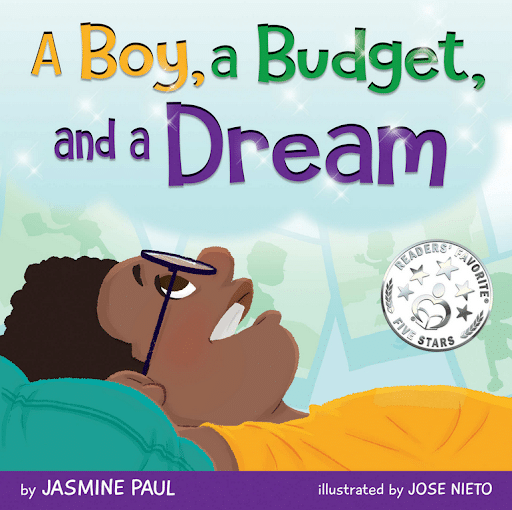
Kass is strict with her budget, while her brother Joey spends everything he earns. However, Kass is supportive and wants her brother to learn more about money saving. Throughout the book, Joey faces difficult decisions. He has to save money for what he wants and dreams of, and yet he cannot seem to keep money in his pocket. Perhaps these hard decisions are what teach Joey that there is more to budgeting.
#6. The Lemonade War – Jacqueline Davies
Jacqueline is a mother of three and wrote a series of financial literacy books for kids. This title is a clever mix of humor, mathematics, and life lessons. The book depicts the bond between brother and sister, challenging each other who will sell the most lemonade before the end of summer.
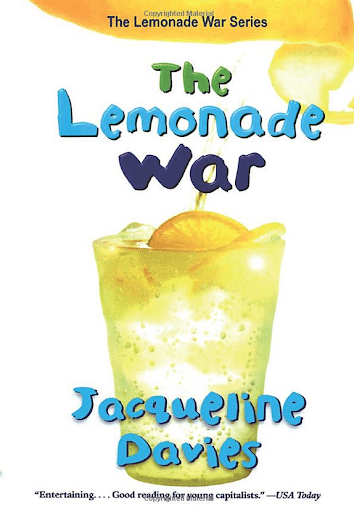
Evan is a charmer, and he is good at talking to people. His younger sister Jessie is brilliant, but she does not comprehend the people’s needs. As the war continues, Evan is sure of himself, but it’s not certain who will win.
#7. A Chair for My Mother – Vera B. Williams
Williams has described family resilience, tenacity, money management, and the importance of aiming toward a dream in a single book. A Chair for My Mother is a story of little girl Rosa who lives with her mother and grandmother. Rosa’s family loses everything in a fire that left her home without the basics needed for everyday life.
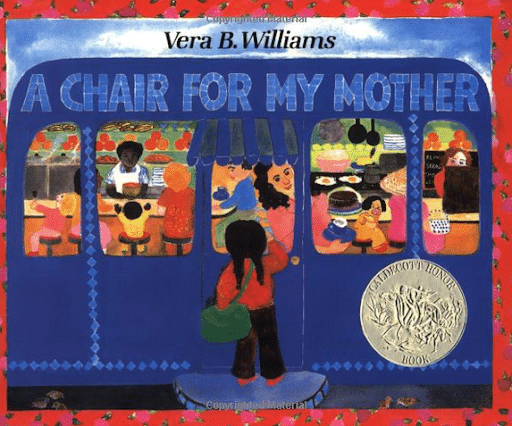
Their neighbors help them gather what they need to continue living, but one thing is missing. Rosa’s family dreams of a chair where they can sit after a long day. So they gather and make a pact to save money in a jar for a new one. After a while, the three have enough money to buy a chair with a rose print. The story follows the family, their hard work, and their dedication to a mutual goal.
#8. Money Ninja – Mary Nhin
The author had a big success with her children’s book series, Ninja Life Hacks. One of those books is Money Ninja, where Nhin teaches about money-saving skills through comic narrative. A friend of Money Ninja asks him how he saves his money. The story starts, and the main character explains his experience with money-saving, donating, and investing. The funny parts keep children entertained while they learn valuable life lessons.
#9. Alexander, Who Used to Be Rich Last Sunday – Judith Viorst
Viorst has a creative perspective while writing children’s books on money management. Alexander, Who Used to Be Rich Last Sunday is a point of view from the perspective of a child. Alexander’s grandparents gave him a dollar, and while he admires the amount of money he has and what he can do with it, his gift begins to wither away. The book teaches how easy it is to spend money on tons of gum rather than saving for a walkie-talkie or other significant things. It’s a well-learned lesson on the value of money.
#10. Money Plan – Monica Eaton
Eaton uses daily examples and rhyme to explain the essential life lessons. For example, her book Money Plan follows a little girl that sets off with her mother on a trip to the grocery store as they do every Sunday. The little girl is fascinated with her favorite treat, and that is when her lesson on money, saving, budgeting, and working hard begins.
Best Children’s Financial Literacy Books Age 7 to 13
#11. The Everything Kids’ Money Book – Brette Sember
Sember has left her long career as an attorney and dedicated herself to writing more than 40 book titles on various topics. One such is the Everything Kids’ Money Book, where the author explains everything kids need to know about money, credit cards, and even investing. In addition, Sember has a separate chapter dedicated to the history of money, banking, and the comparison between needs and wants.
She even explains sharing funds with charities. The book is a fun and accessible treasury of terms and concepts. The author integrated the moments of fun puzzles to reinforce the kid’s knowledge of the subject they just learned. In addition, she has immersed herself in explaining to the kids how online banking works. This is a great book to gather knowledge of terms and how the banking system works for a child willing to learn through puzzles and fun facts.
#12. Grandpa’s Fortune Fables – Will Rainey
Rainey was a financial consultant before he embarked on a journey to write financial literacy books for kids and give speeches that help parents teach their children. Similarly, Grandpa’s Fortune Fables is a collection of stories by a little girl Gail. She is revealing the incredible journey of her grandfather, where he traveled the distant lands and learned how to manage his money.

Through the tales and experiences, children can learn about money management, investing, donating to charity, and why they should avoid gambling. Hence, Grandpa has a lot to tell, and the entire book is an adventure where at the end of each chapter, kids have to solve a puzzle to reveal a secret letter at the end of the book. Grandpa’s tales are a great way to engage a child and entice it to learn more about what grandpa has to tell.
#13. A Smart Girl’s Guide How to Make It, Save It, and Spend It – Nancy Holyoke
Holyoke is the founding editor of American Girl. During her time, she started writing a series of books for girls. One of them is A Smart Girl’s Guide: How to Make It, Save It, and Spend It, and it is a mix of quizzes, stories, and quotes on money spending and saving. As most girls like shopping, Holyoke turns her narrative and talks to a specific group of girls that need to learn about saving money rather than spending it.
She uses quotes from other girls to make a story more personal to girls. The real-life examples are more likely to impact the teenager looking to learn more about how to save and spend the money in their pocket. It’s an engaging set of tips that will help a child learn more about the cause and effect of spending money.
#14. How Ella Grew an Electric Guitar – Orly Sade and Ellen Neuborne
The book is the story of eleven-year-old Ella, who has a band with her friends. She has a plan to ask her parents for an electric guitar. However, as they already bought her an acoustic one, they think she doesn’t need to spend money on something she already has. But, they decided to show her how to raise money for what she wanted. That’s where the journey of Ella and her friends begins as they start to consider business ways to earn money and add the powerful sound of electric guitar to their band.
#15. Payback on Poplar Lane – Margaret Mincks
Mincks has a talent for telling stories using the mix of real life as grownups and downgrading it to a child level. The book Payback on Poplar Lane is not just about money management but a valuable book on friendship, priorities, feelings, and comedy. It tells the story of a boy who comes up with something different from his neighbors.
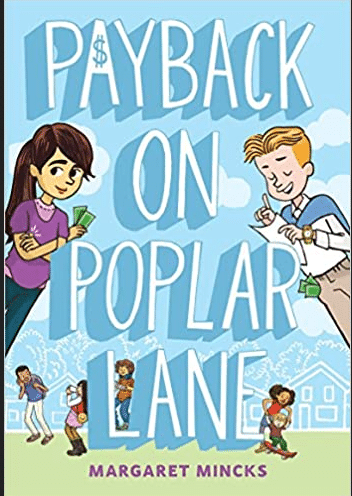
Tired of lemonade standing in the street, he hires his friend to be his intern without pay. However, the boy will soon learn that friendship is more important than money and that he cannot expect gratification if he has an idea. The tension and twists throughout the book will keep your child rooted in the book.
Financially Educated Youth: Financial Literacy Books for Kids in a Changing World
The world is changing, and so are the needs of children. Children today have a lot more access to information than ever before. They are exposed to new technologies, new ideas, and new cultures. Unfortunately, this has led to a decline in the time children spend reading books. This is a severe issue because kids who don’t read often struggle with schoolwork and have low literacy rates.
One way to help children learn about these changes is through books that teach them about the different financial literacy skills they will need as they grow up. But unfortunately, it is hard for parents to know what books are best for their children and what they should read at every age.
With financial literacy books, parents can help their children learn about money without fear of them learning bad habits or being influenced by other adults who may not be financially literate.
Many different types of financial literacy books cover topics like saving, spending, budgeting, debt, investing, and more. Some of these books are written by experts, and others have been written with children’s help.
Publishers are now more focused on providing children with age-appropriate books, including financial literacy. These books are teaching children about money without them realizing it. They are designed to be interactive and fun while teaching kids the critical financial skills they need.
Reading books has many benefits, but learning early about money management skills is what gets them ready for the future. Children who learn from an early age experience money management differently than those who don’t. It doesn’t matter whether you choose financial literacy books for kids, activities, or educational apps to teach a child. Ultimately, your children must be acquainted with the concept one way or another.













